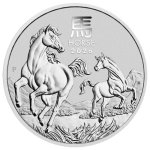Mary Stetler
Well-known member
- Joined
- Mar 11, 2025
- Messages
- 456
Interesting. This is one more time I could not get here by clicking on the link in my email. I got to 'what was I watching...'As far as I can tell bullion metals are treated as "collectibles" and taxed on sale as Capital Gains or Losses. Those held less than a year are Short Term and taxed as normal income, a year or more are Long Term and taxed at capital income rates.
At purchase you are supposed to keep a record of the date and "cost basis" (basically the purchase price plus storage costs, insurance, appraisal fees, etc.). If received as a gift you're supposed to record the date and the valuation at the time of receipt as well as various fees as for purchased bullion (holding costs).
c
I'm no tax pro, so none of that's advice and might even be wrong. I'm puzzled by things like how you spread out the cost of a safe over a pile of coins.
Say I buy a safe for $5000 and store 200 ounces of gold. Then I add 10 more ounces. Then I sell 5 later on. How much of that $5000 applied to that 5 ounce sale for tax purposes?
Here, there was talk in the state house of allowing metals to be used as currency not investment. Long ago each state had its own.
